Class 5 EVS Chapter 1 Water — The Essence of Life NCERT Solutions
Discuss (Page 4)
1. Do you think we can drink the water present in the oceans?
Answer:
No, we cannot drink the water present in the oceans because it contains a large amount of dissolved salts, which make it unfit for drinking.
2. What can ocean water be used for?
Answer:
Ocean water can be used for producing salt, generating electricity, transportation, and fishing. It can also be desalinated to make it suitable for drinking.
Activity 1 (Page 5)
Q. Where can we find freshwater? Identify the different freshwater sources from the images given below and write their names.
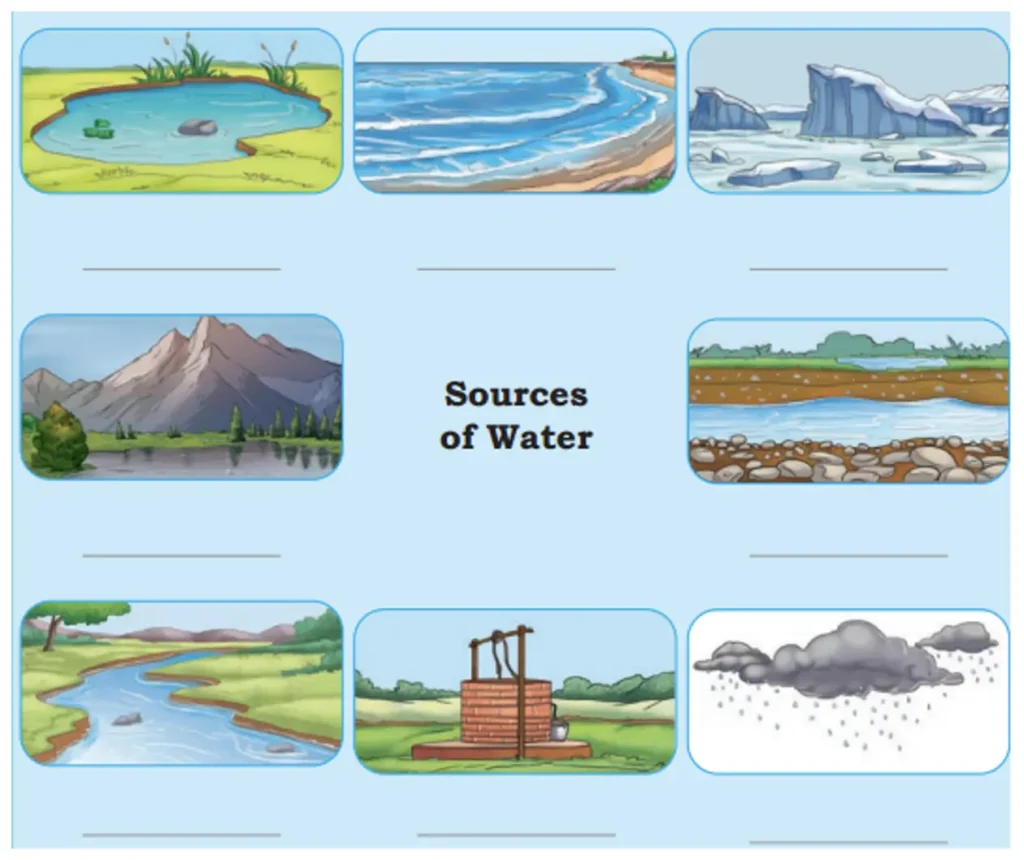
Answer:
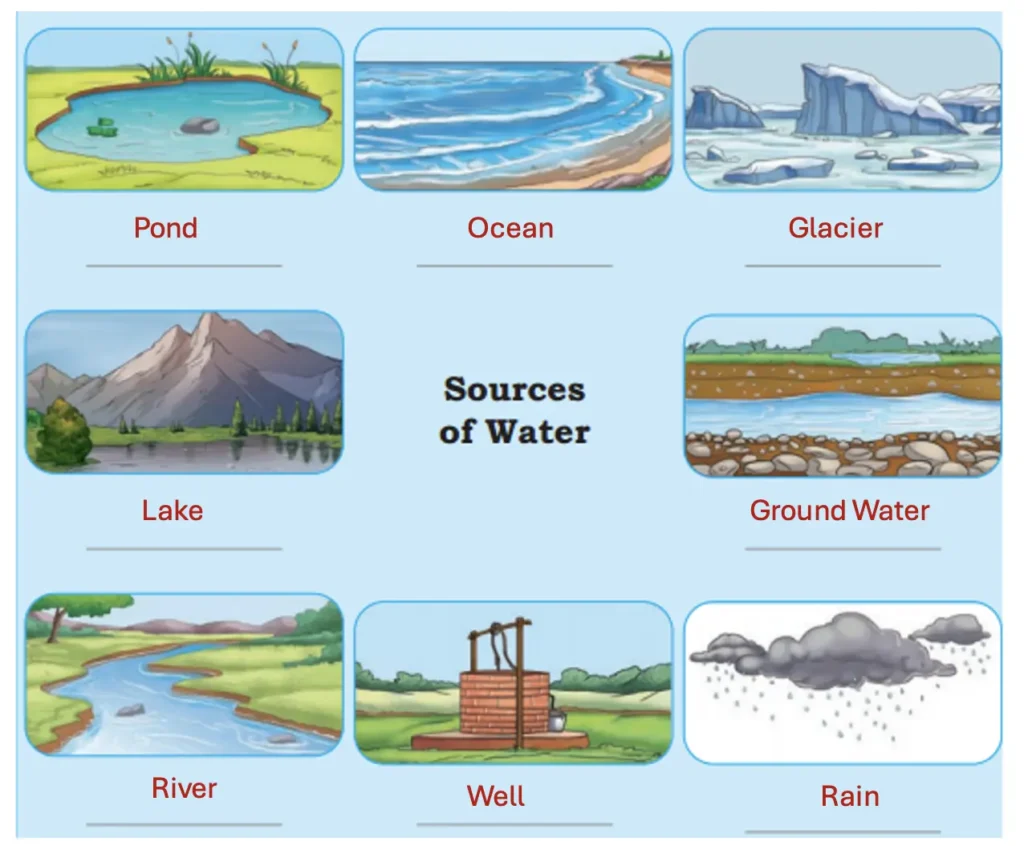
Activity 2 (Page 6)
Q. Take a steel glass. Put some ice cubes in it. Observe the small water droplets forming on the glass.
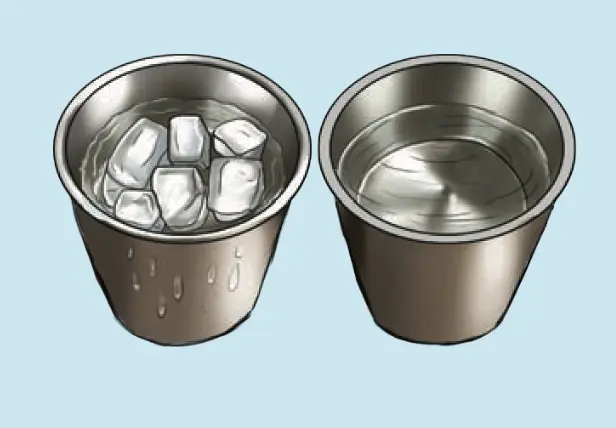
(a) Where do these water droplets come from?
Answer:
These droplets come from the condensation of water vapour present in the surrounding air.
(b) What happens to the ice cubes after they are left in the glass for some time?
Answer:
The ice cubes melt and turn into water after being left in the glass for some time.

(c) If we heat water, what will happen to it?
Answer:
On heating, water will start boiling and change into water vapour through the process of evaporation.
Q. In the above activity, what forms of water do you see?
Answer:
We see water in the solid form as ice, in the liquid form as water, and in the gaseous form as water vapour.
Observing Changes

Answer:

Activity 3 (Page 7)
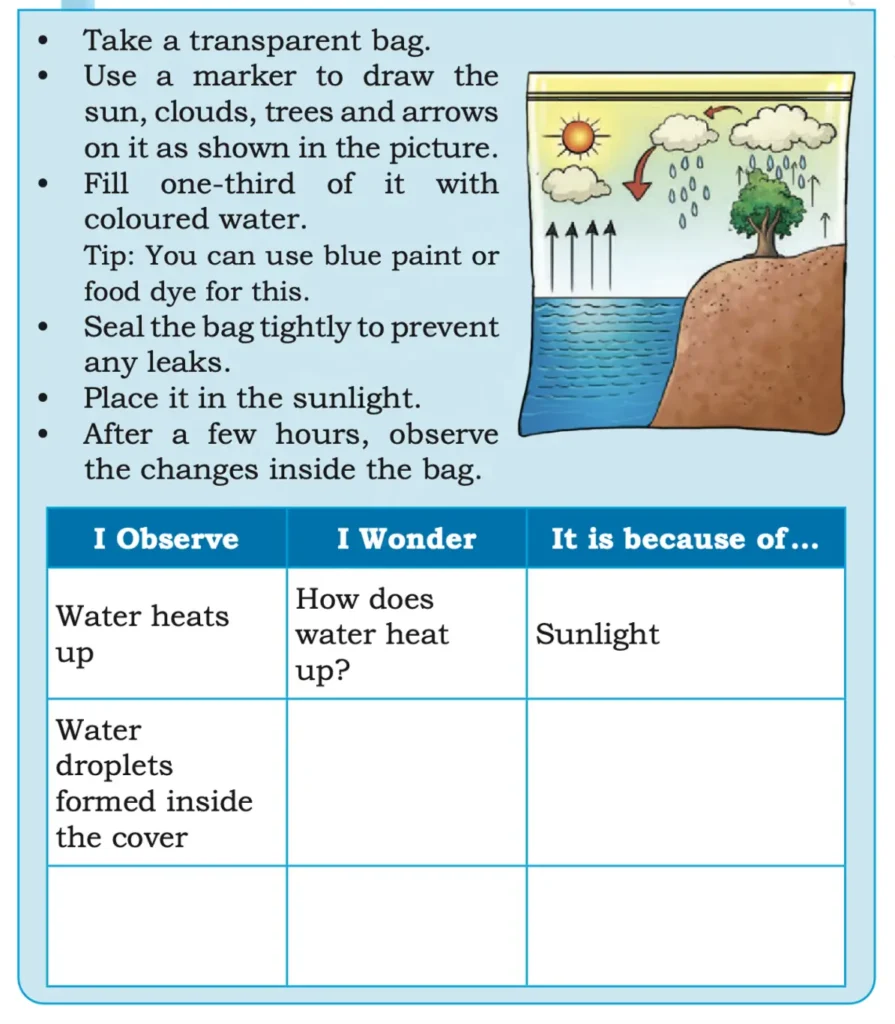
Answer:
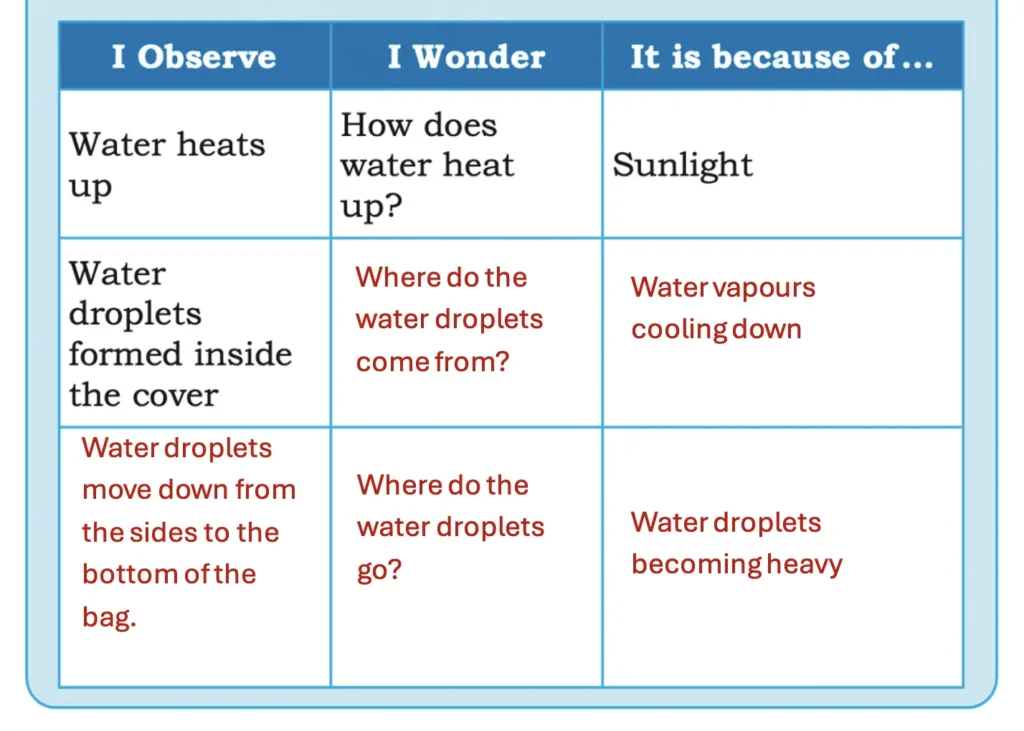
Activity 4 (Page 9)

Answer:
When water is poured into the soil, it gets absorbed. This water moves down through the soil layers and collects at the bottom of the glass.
Activity 5 (Page 9)
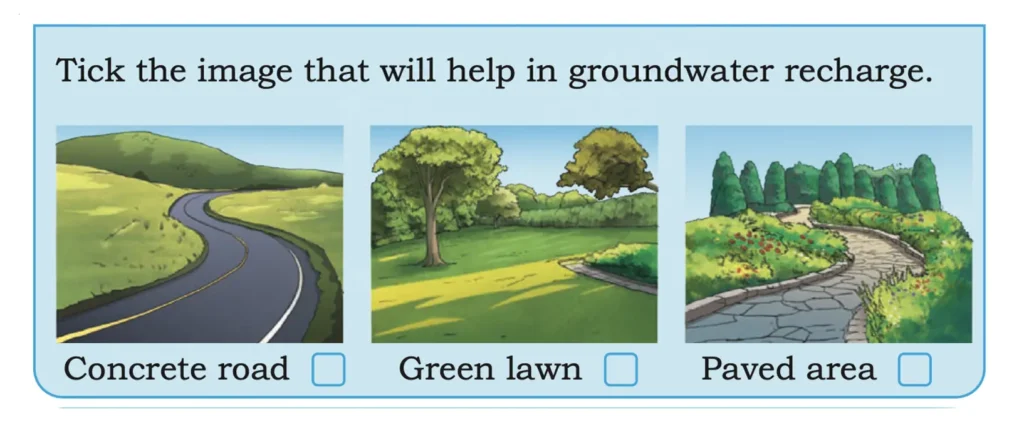
Answer:
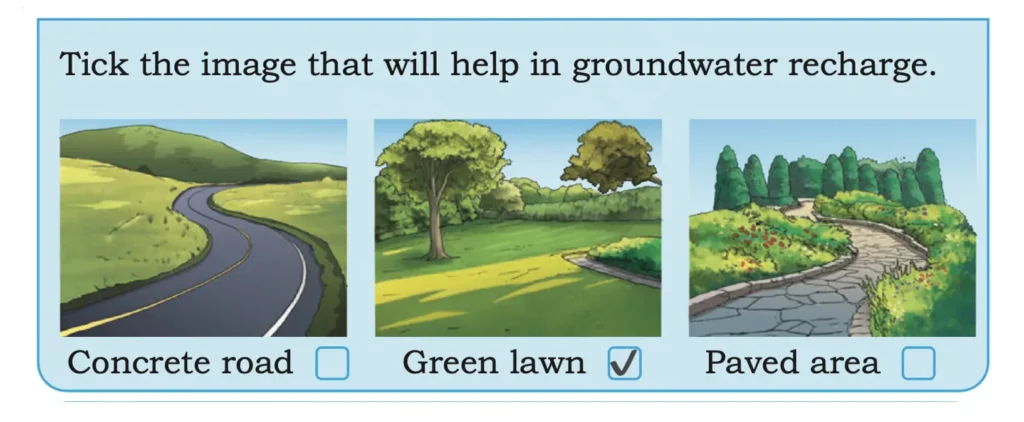
Activity 6 (Page 10)
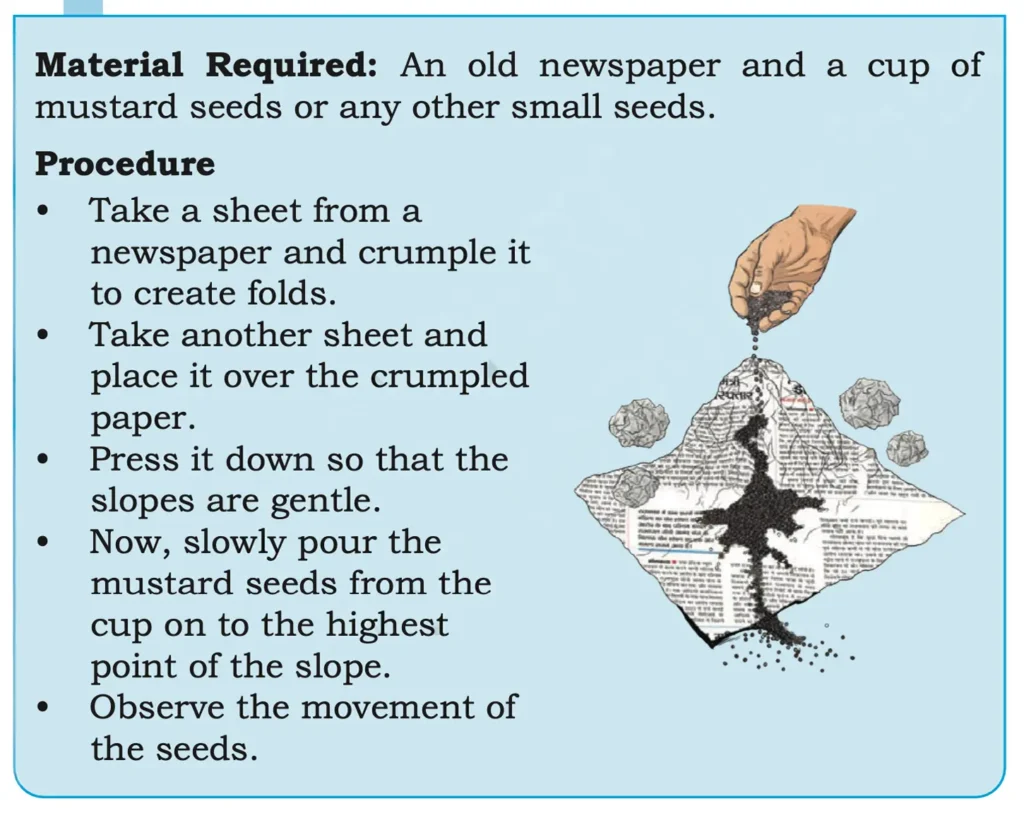
1. What did you observe about the mustard seeds?
Answer:
The mustard seeds move downward from the top in the direction of the slope of the paper, just like rivers flow according to the slope of the land.
2. Are they moving in a straight line, or do they spread out in different directions?
Answer:
The seeds spread out in different directions while moving down the slope.
3. Are they collecting in some areas? Do they gather like water gathers in lakes, rivers, and so on?
Answer:
Yes, the seeds are collecting in low areas just like water gathers in lakes, rivers, and so on.
Discuss (Page 11)
Q. On the basis of Activity 6 with mustard seeds, discuss how some rivers flow towards the Arabian Sea while some flow towards the Bay of Bengal.
Answer:
In Activity 6, the mustard seeds move downwards along the slope of the paper. Similarly, rivers also flow according to the slope of the land. In some regions, the land slopes towards the Arabian Sea, so the rivers flow into the Arabian Sea. In other regions, the land slopes towards the Bay of Bengal, so the rivers flow into the Bay of Bengal.
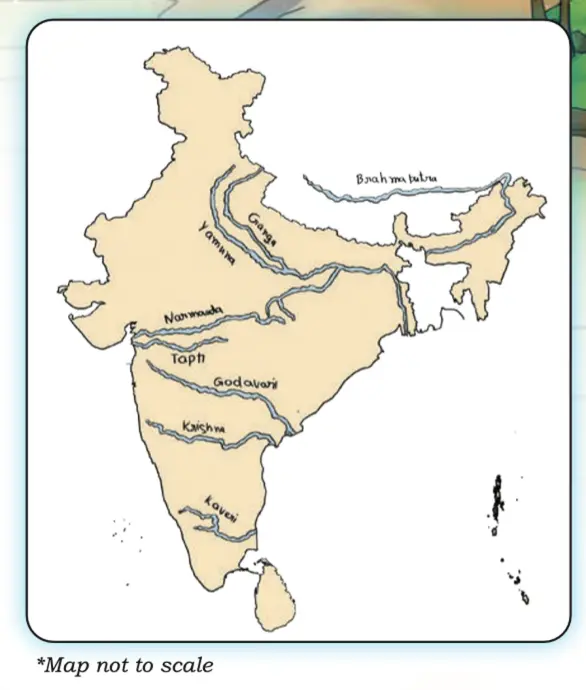
Activity 7 (Page 13)
Follow the Flow!
In the map, you can see the rivers flowing in different directions. Some flow into the Bay of Bengal and some into the Arabian Sea.
Observe and fill in the table.
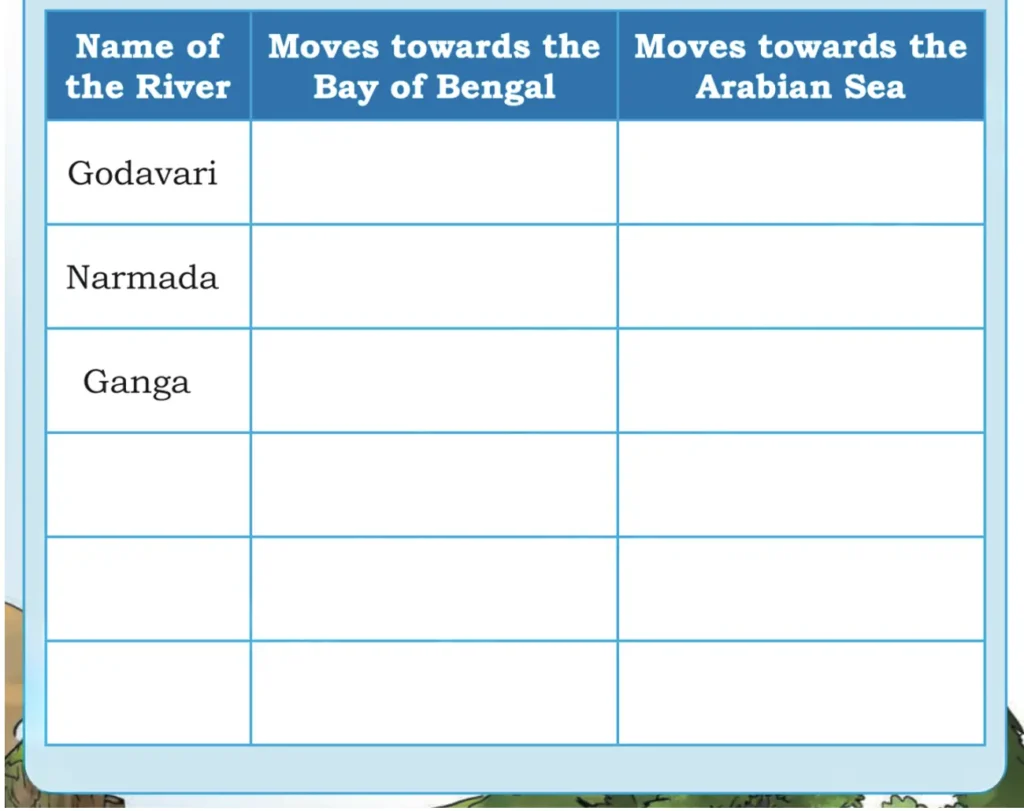
Answer:
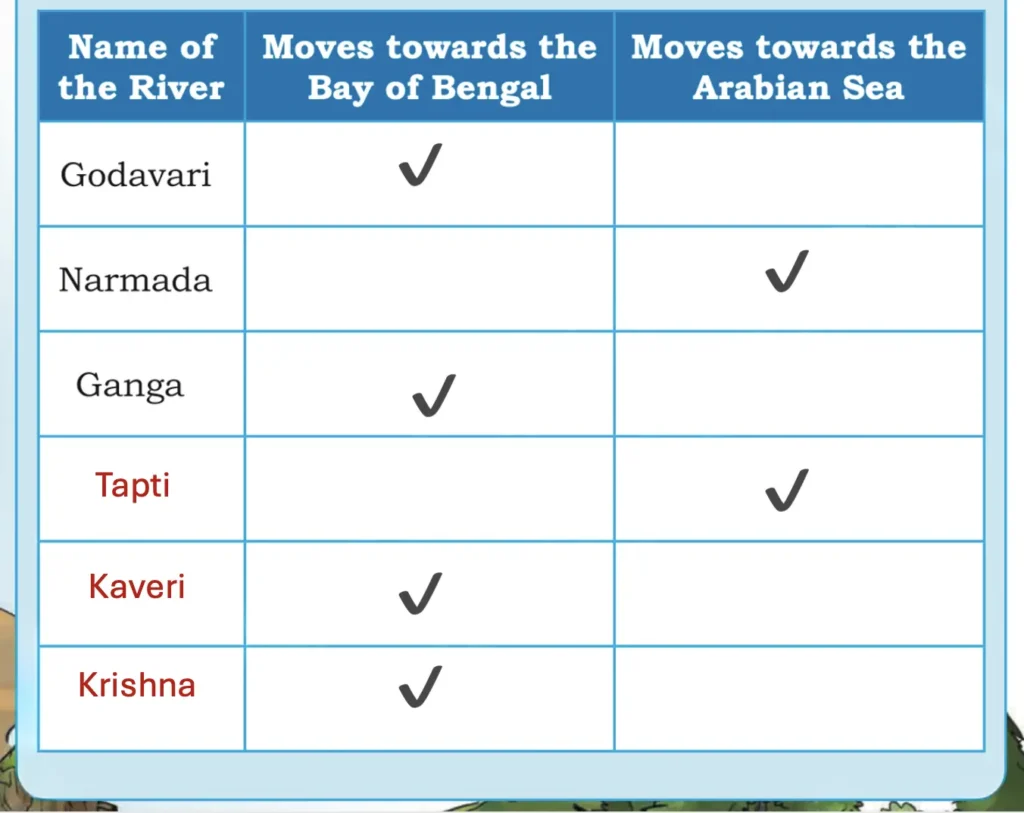
Textbook Page 15
Q. Complete the following table discussing with peers about the characteristics of animals on land and animals in water.
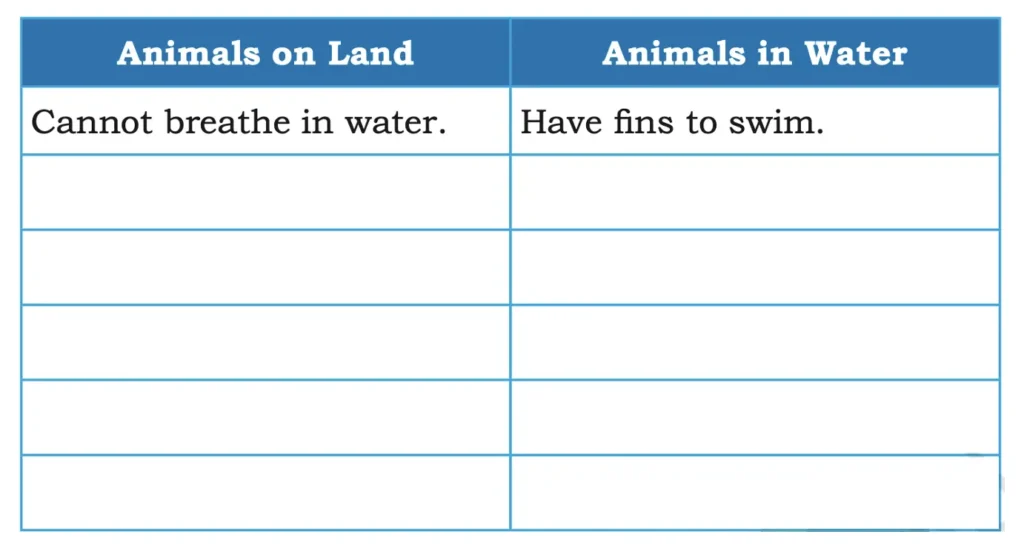
Answer:
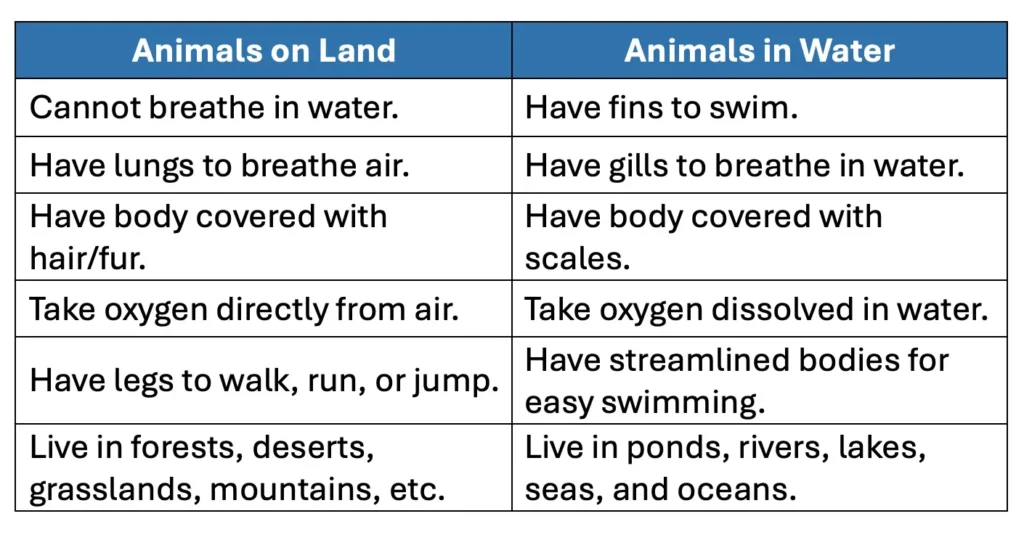
Activity 8 (Page 17)
Visit a local water body like a pond, lake or an aquarium with your teacher or parents, and observe life in and around the water body.
1. Based on your observations, complete the following table.
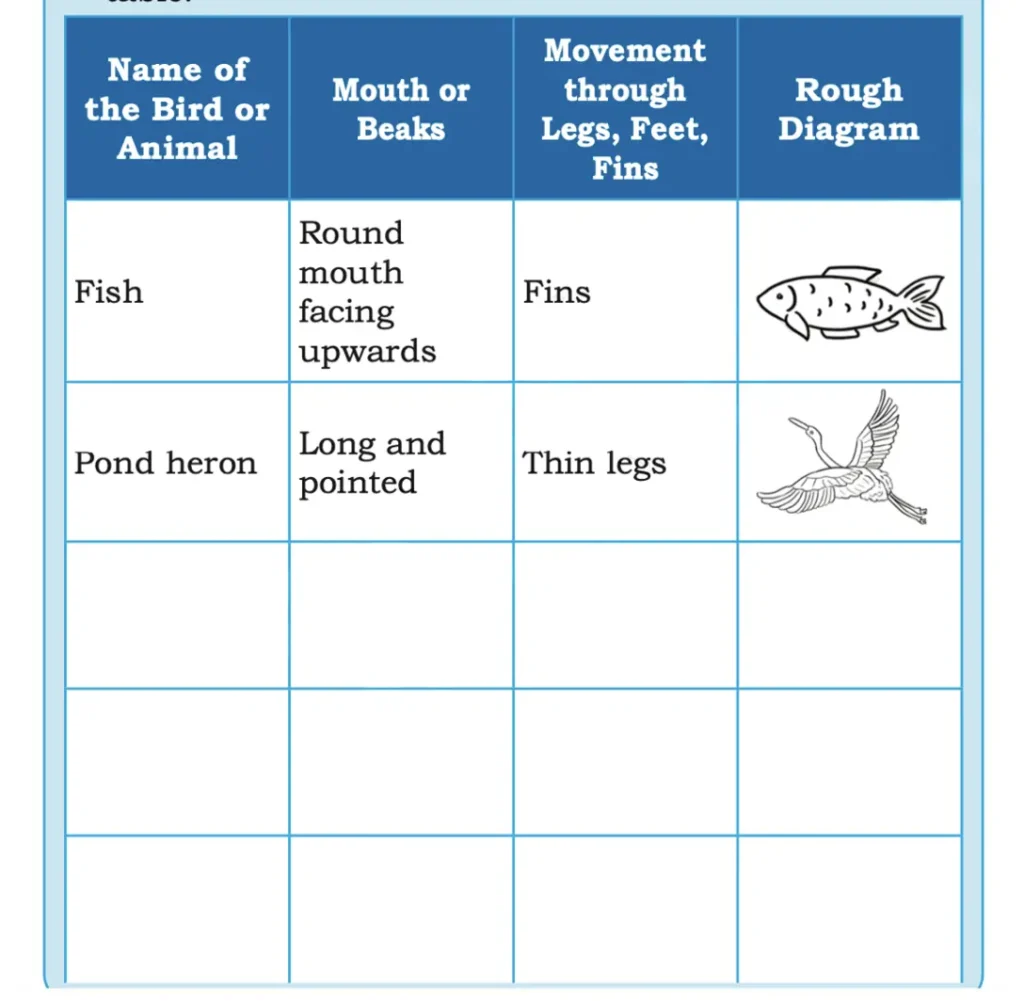
Answer:
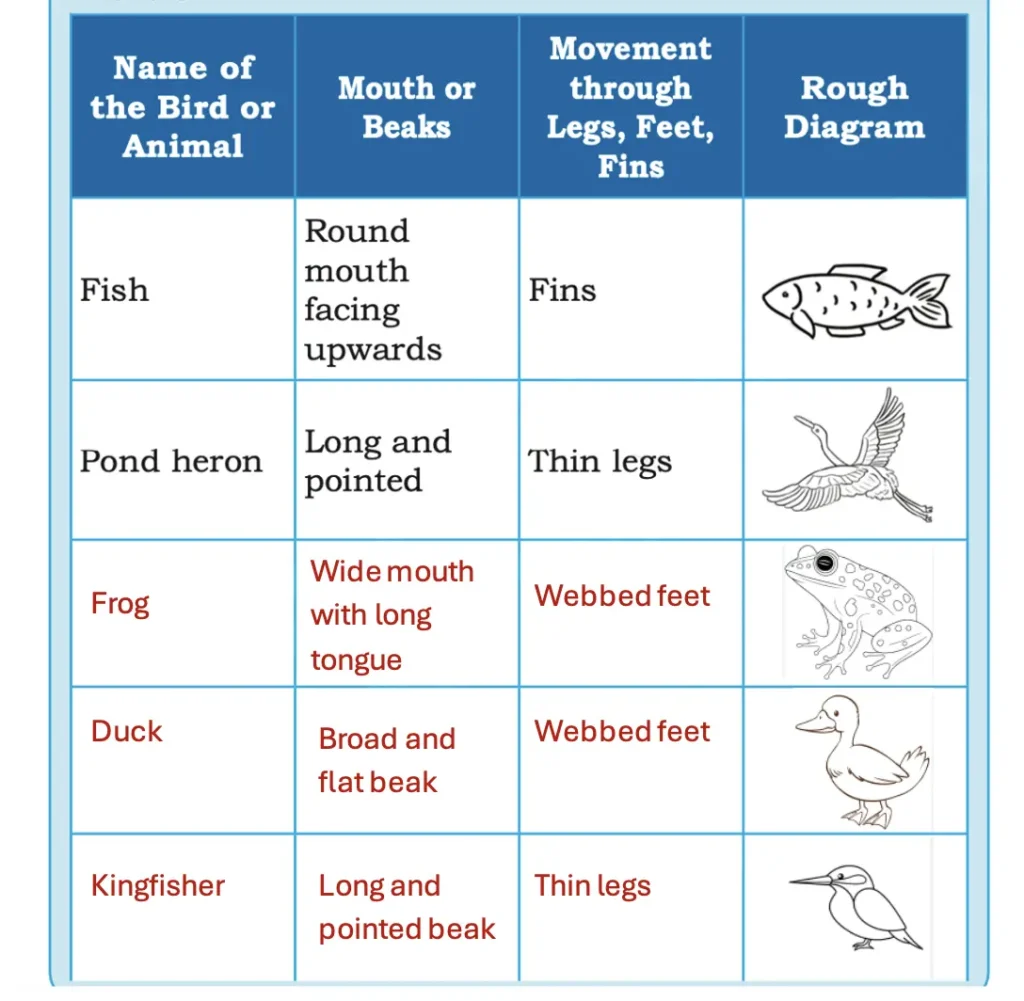
2. Draw the plants that you saw during the visit and label them with their local name.
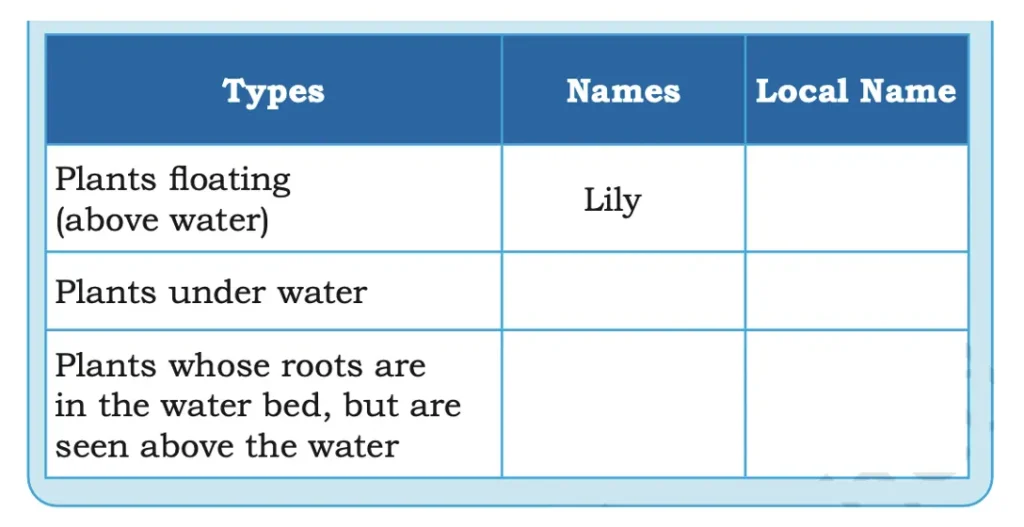
Answer:
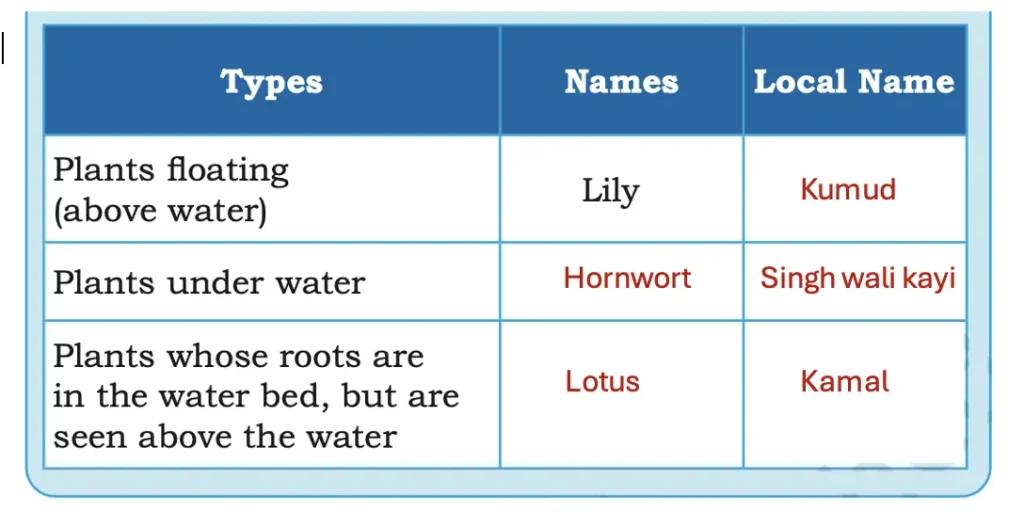
Activity 9 (Page 18)
1. Take a piece of paper and put a drop of water on it. Observe.
2. Colour the paper with a wax crayon. Now, put a drop of water on it. Do you observe any change?
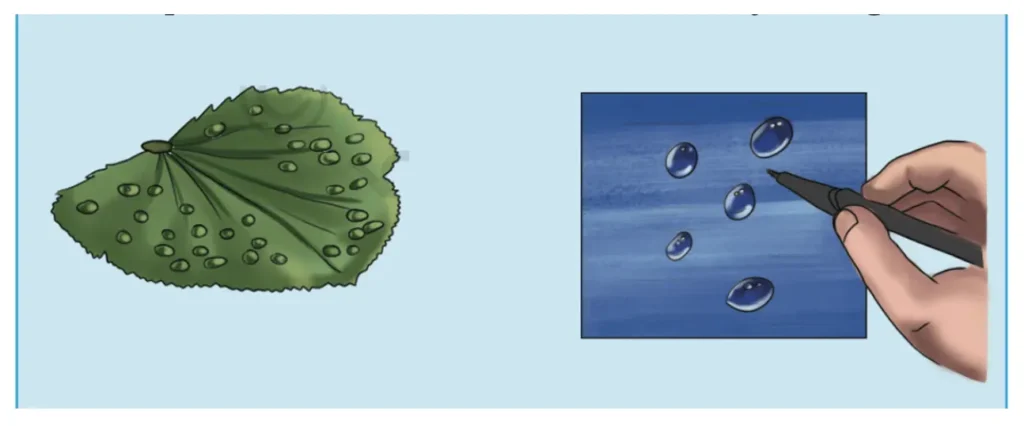
Write your observations.
Answer:
When we put a drop of water on a plain sheet of paper, it gets absorbed, and the paper becomes wet. But when we put a drop of water on a piece of paper coloured with crayons, it does not wet the surface and remains on the paper as a small round drop.
Activity 10 (Page 19)
Who Eats Whom?—A River Food Chain Game
• Distribute slips of paper to students. Each student writes what they choose to be (for example, small fish, big fish, frog, bird, human, crocodile, otter, etc.)
• Ask the students to think about what they eat, and who eats them.
• Use a string to connect the students who depend on each other for food.
• Discuss what would happen if one animal disappears (for example, what if all the fish are gone?).
Answer:
Do it yourself.
Let us reflect (Page 20)
1. Match the following:

Answer:

2. Why do you think most of the water on Earth cannot be used for drinking or farming?
Answer:
Most of the water on Earth is found in oceans and seas, and it is salty, making it unsuitable for drinking or farming. Only a small portion of Earth’s water is fresh water, which is found in rivers, lakes, and glaciers, and this is the water that humans, animals, and plants can use.
3. Large number of living beings live near water bodies. Why?
Answer:
A large number of living beings live near water bodies because water is essential for drinking, growing crops, and carrying out daily activities. Many plants and animals also live in freshwater. Without water, life would not be possible, as all living beings—people, animals, birds, and plants—depend on it to survive.
4. What would happen if it did not rain in your region for two years?
Answer:
If it did not rain in our region for two years, rivers, ponds, and lakes would dry up. There would be less water for farming, crops would not grow well, and people might face food shortages.
5. What do you think happens to rainwater in a forest compared to a city?
Answer:
In a forest, rainwater gets absorbed by plants and trees and soaks into the soil, which helps replenish underground water.
In a city, many surfaces like roads, buildings, and pavements are cemented. This makes rainwater run off quickly, often causing waterlogging or flooding, and very little seeps into the ground.
6. Can you design a house or school that conserves water wisely? What would it include?
Answer:
Yes, a house or school that conserves water would include:
(i) Rainwater harvesting to collect and store rainwater.
(ii) Reuse of greywater for toilets and gardening.
(iii) Use of water-saving taps and toilets.
(iv) Drip irrigation for watering plants and trees in the garden.
7. Let us make a fish by folding a piece of paper.

Answer:
Do it yourself.
